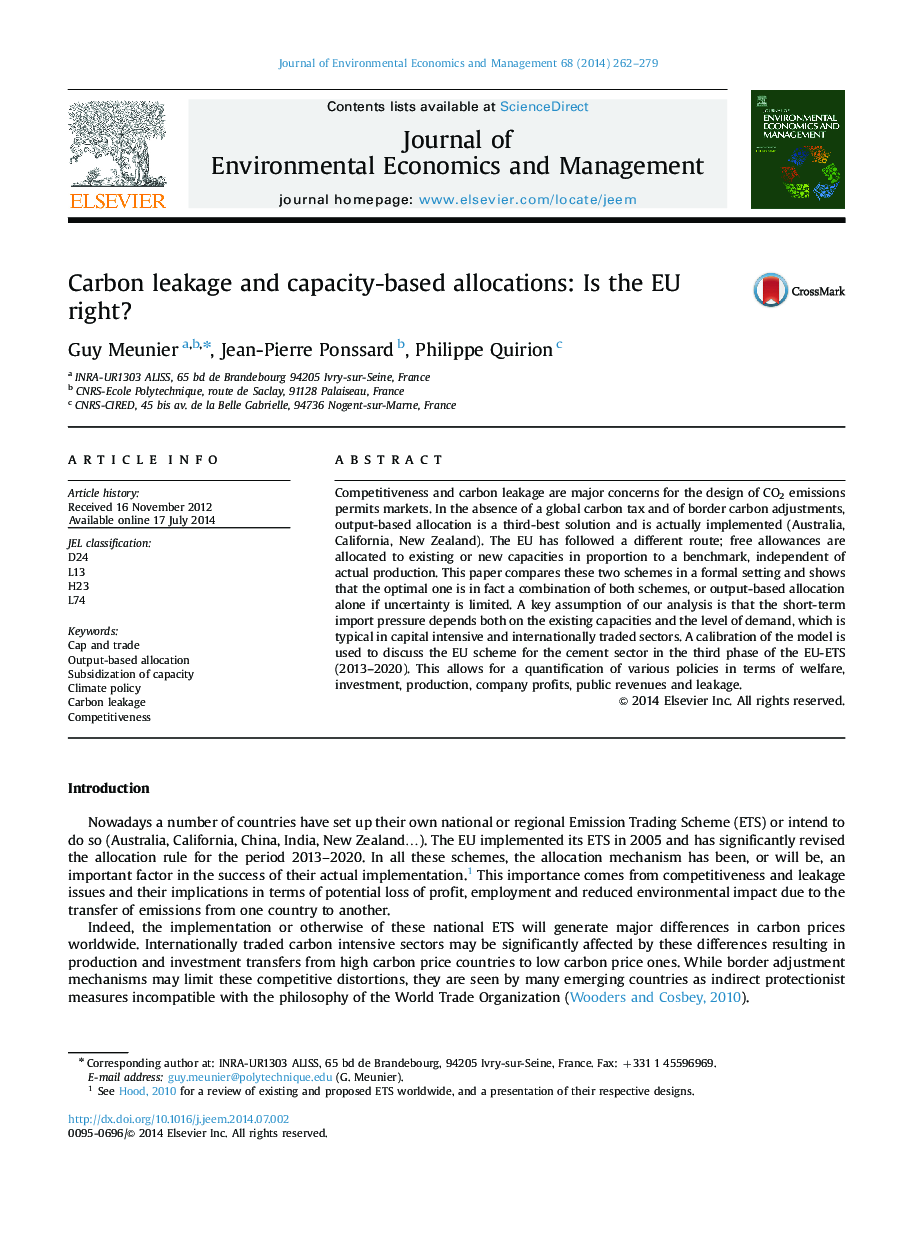| Article ID | Journal | Published Year | Pages | File Type |
|---|---|---|---|---|
| 10475572 | Journal of Environmental Economics and Management | 2014 | 18 Pages |
Abstract
Competitiveness and carbon leakage are major concerns for the design of CO2 emissions permits markets. In the absence of a global carbon tax and of border carbon adjustments, output-based allocation is a third-best solution and is actually implemented (Australia, California, New Zealand). The EU has followed a different route; free allowances are allocated to existing or new capacities in proportion to a benchmark, independent of actual production. This paper compares these two schemes in a formal setting and shows that the optimal one is in fact a combination of both schemes, or output-based allocation alone if uncertainty is limited. A key assumption of our analysis is that the short-term import pressure depends both on the existing capacities and the level of demand, which is typical in capital intensive and internationally traded sectors. A calibration of the model is used to discuss the EU scheme for the cement sector in the third phase of the EU-ETS (2013-2020). This allows for a quantification of various policies in terms of welfare, investment, production, company profits, public revenues and leakage.
Keywords
Related Topics
Social Sciences and Humanities
Economics, Econometrics and Finance
Economics and Econometrics
Authors
Guy Meunier, Jean-Pierre Ponssard, Philippe Quirion,
